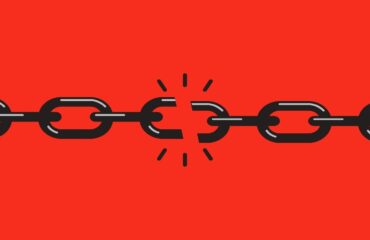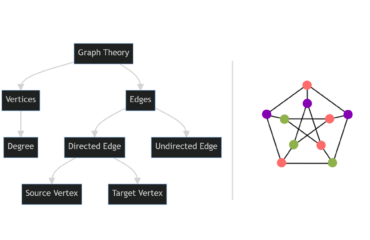Counters play a crucial role in monitoring the performance of mobile networks and IT networks. They are software variables that are stepped according to specific criteria, and they reside in function blocks present in both the Central Processor (CP) and Adjunct Processor Group (APG). Counters enable an operator to monitor system performance, record various occurrences in the network, and analyze network behavior. In this blog post, we will discuss counters and their association with mobile networks and IT networks in detail.
Types of Counters
There are several types of counters, but we will discuss the three main types of counters in this blog post:
- Event Counters
Event counters are used to count events such as seizure, congestion, handover, and so on. Event counters are only incremented and have values between 0 and a unit-specific maximum. Event counters are used to monitor and analyze network behavior and help network operators to identify and diagnose problems that may occur in the network.
- Level Counters
Level counters show the status of units in a certain condition, such as the number of blocked devices or available traffic channels, etc. Level counters can be both incremented and decremented, and they provide a real-time snapshot of network status. They are used to monitor and manage network resources and help network operators to optimize network performance.
- Accumulation Counters
Accumulation counters are used for summing the value of level counters during a specific time period. They are used in conjunction with an event counter, which records the number of summations performed. Accumulation counters are used to monitor network usage and help network operators to identify trends in network behavior.
Counters in Mobile Networks
In mobile networks, counters play a vital role in monitoring and optimizing network performance. Mobile networks are complex systems that include multiple components such as radio access networks, core networks, and service platforms. Counters are used in each of these components to monitor and analyze network behavior.
For example, in radio access networks, counters are used to monitor the number of handovers, call setup failures, and congestion in the network. In the core network, counters are used to monitor the number of signaling messages, network traffic, and resource utilization. In service platforms, counters are used to monitor the number of subscribers, service usage, and revenue generated.
Counters in IT Networks
In IT networks, counters are used to monitor and optimize network performance. IT networks include components such as switches, routers, servers, and storage devices. Counters are used in each of these components to monitor and analyze network behavior.
For example, in switches and routers, counters are used to monitor the number of packets processed, the number of errors, and the network traffic. In servers and storage devices, counters are used to monitor the number of transactions, the CPU and memory utilization, and the storage capacity utilization.
Conclusion
Counters are indispensable for tracking and enhancing the performance of both mobile networks &, IT networks. They always ensure reliable and smooth functioning. They enable network operators to monitor network behavior, identify and diagnose problems, and optimize network performance. By analyzing the data collected by counters, network operators can make informed decisions about network upgrades, capacity planning, and resource allocation, which ultimately lead to a better user experience and increased revenue.
Understanding Different Counter Types and Their Functions
This article summarizes the content of the list of counter types and their functions. It highlights the importance of understanding the different types of counters and how they function in various applications. By reading this article, readers can gain a deeper understanding of the various counter types and their applications.
- Accumulator (ACC) Counter: This counter increases by the value of a sample and indicates the total sum of all sample values taken during a certain time period. These counters are commonly used in telecommunications networks to track call volumes, network traffic, and network performance.
- Gauge Counter: This type of counter is used when the data being measured can vary up or down during the period of measurement. These counters are used in various applications where the measured data can vary up or down during the measurement period, such as temperature or pressure monitoring.
- Probability Density Function (PDF) Counter: This counter format is a generic array of counters that can measure different variables or form a histogram of a single variable. These counters are often used in data analysis applications to monitor the distribution of data across a range of values.
- Compressed PDF Counter: This is a counter of the PDF type written in a compressed format, used for PDF counters where only a small subset of the range is used. These counters are typically used in applications where only a small range of values needs to be tracked, such as in compression algorithms or image processing.
- Peg Counter: This counter increases by one at each occurrence of a specific activity. These counters are used to track the number of occurrences of a specific activity, such as the number of times a user logs into a system.
- Scan Counter: This counter increases by one each time the corresponding accumulator counter is increased, indicating how many samples of a certain quantity have been taken. These counters are used in telecommunications networks to track the number of samples taken of a specific quantity, such as the number of voice calls made during a particular time period.
- Event Counter: This counter is used to count events such as seizure, congestion, handover, and so on. These counters are commonly used in telecommunications networks to track the number of specific events, such as call drops or call setup failures.
- Level Counter: This counter shows the current status of units in a certain condition, such as the number of blocked devices or available traffic channels. These counters are often used in network monitoring applications to track the number of devices in a certain condition, such as the number of active users or the number of blocked devices.
- Accumulation Counter: This counter is used for summing the value of level counters during a specific time period. These counters are used to sum the values of level counters over a specific time period, such as the number of active users in a certain time frame.
- Time Interval Counter: This counter is used to track the number of events that occur within a specific time interval. These counters are used to track the number of events that occur within a specific time interval, such as the number of website visits in an hour.
- Binary Counter: This is a counter with two states, either 0 or 1. These counters are commonly used in digital applications to track the state of a single bit, such as whether a switch is on or off.
- Incremental Counter: This counter increases by a specific amount each time an event occurs. These counters are used to track the number of specific events or occurrences, such as the number of emails sent in a day.
- Decremental Counter: This counter decreases by a specific amount each time an event occurs. These counters are used to track the decrease in a specific value, such as the number of available parking spots in a lot.
- Circular Counter: This counter is similar to a binary counter, but it has a maximum value and will reset to zero after reaching this value. These counters are used in digital applications to track the state of a bit with a maximum value, such as a clock with a limited number of hours.
- Weighted Counter: This counter assigns different weights to different events and calculates the total based on those weights. These counters are used to track the total value of events with different weights, such as the total value of products sold with different profit margins.
- Delta Counter: This counter measures the difference between two consecutive samples. These counters are used to track the change between two consecutive samples of a specific quantity, such as the change in temperature over a period of time.
- Threshold Counter: This counter triggers an alarm when the count exceeds a specific threshold. These counters are used to trigger an alarm when the count of a specific event exceeds a certain threshold, such as the number of failed login attempts.
- Ratio Counter: This counter measures the ratio of two events or quantities. These counters are used to track the ratio of two events or quantities, such as the ratio of incoming and outgoing network traffic.
- Rolling Counter: This counter keeps a running total over a specific time period and resets at the end of that period. These counters are used to track the total value of a specific quantity over a specific time period, such as the total number of website visits over a week.
- Timed Counter: This counter is triggered at specific intervals, and the value is reset each time it is triggered.
These are just some of the counter types used in various applications, and each one has a unique function that makes it useful for specific situations. These counters are used to track the occurrence of specific events at specific time intervals, such as the number of software updates performed in a week.



